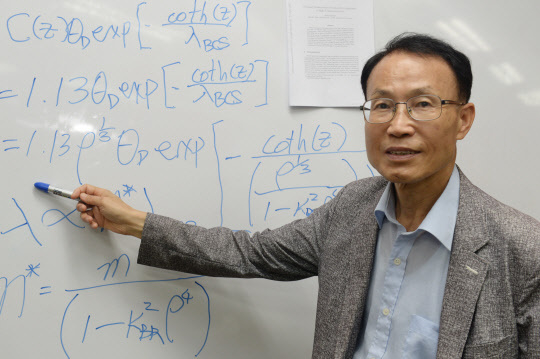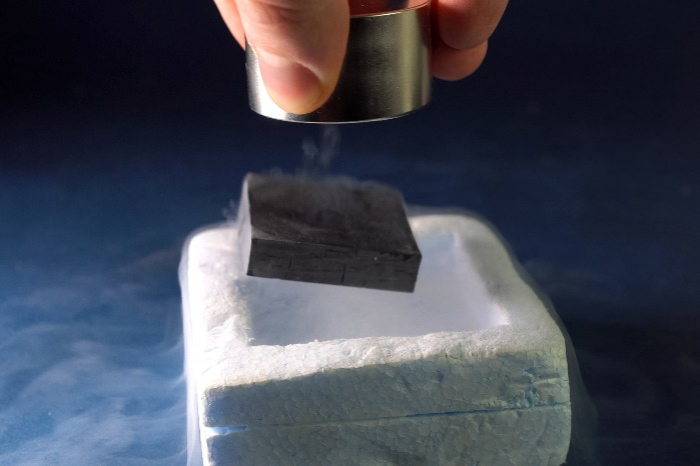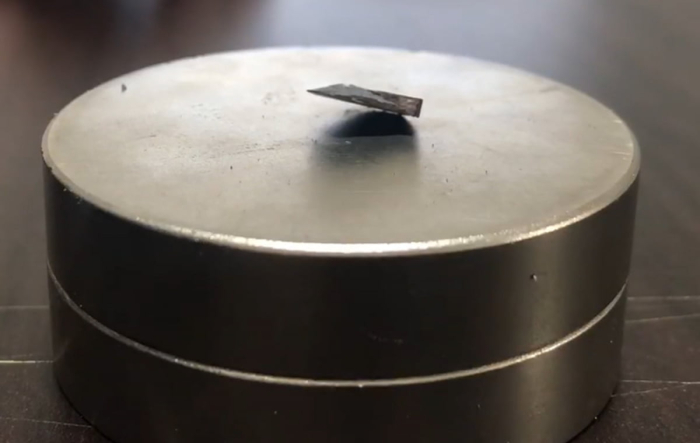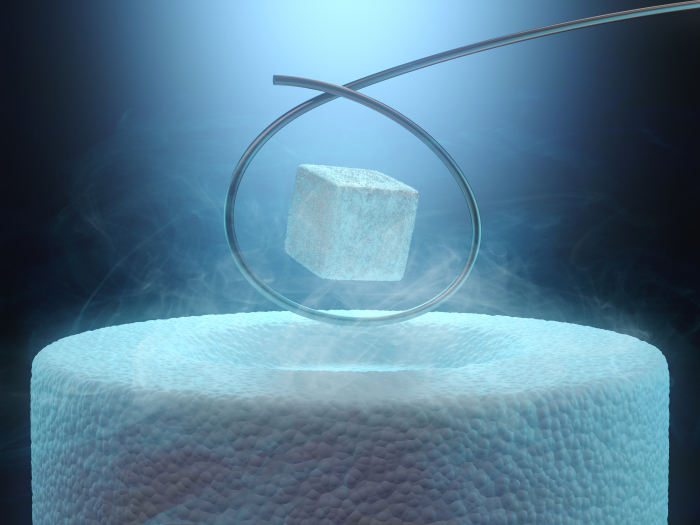Tech, Media & Telecom
Korea's new superconductor will be verified: research team
Despite expanding skepticism, they claim the room-temperature superconductor will be replicated in a month
By Aug 04, 2023 (Gmt+09:00)
4
Min read
Most Read
LG Chem to sell water filter business to Glenwood PE for $692 million


KT&G eyes overseas M&A after rejecting activist fund's offer


Kyobo Life poised to buy Japan’s SBI Group-owned savings bank


StockX in merger talks with Naver’s online reseller Kream


Meritz backs half of ex-manager’s $210 mn hedge fund



Global scientists will be able to replicate South Korean researchers’ recent findings of room-temperature superconductor in around a month, despite ongoing controversy over the reliability of the claim, said Lee Suk-bae who co-authored two papers on the research.
The Korean research team is working on a follow-up study to advance the newly discovered material, dubbed LK-99, and will explain the findings to the public soon, Lee, the chief executive of Seoul-based Quantum Energy Research Center told The Korea Economic Daily on Friday.
While a verification committee from the Korean Society of Superconductivity and Cryogenics said it needs a sample of the material for a test, Lee said Kim Hyun-tak, who co-authored a second paper, will respond to it.
Kim, a research professor of physics at Virginia-based liberal arts university William & Mary, told Yonhap News Agency on Aug. 3 that the research conclusion can only be explained by phenomena of superconductivity. Kim added he is planning to present the findings to the American Physical Society (APS), a not-for-profit membership organization of physics professionals, next year.

STATE-OF-ART MATERIAL
A superconductor can levitate in a magnetic field and conduct electricity with zero resistance, thus having no loss of energy – a conventional conductor gets hot because it has resistance and generates heat.
It is touted as a state-of-the-art material that can speed up connections between computer chips, strengthen the electromagnetic field for magnetic resonance imaging (MRI) scanners and provide higher efficiency to power grids and maglev railways. However, the cryogenic environment has been a major obstacle to commercializing the material.
It was in 1911 when the world’s first superconductivity was discovered by Dutch researcher and Nobel laureate Heike Kamerlingh-Onnes at 4.2 Kelvin, which is minus 452.1 Fahrenheit or minus 269 degrees Celsius. Today, a high-temperature superconductor is discovered above 77 Kelvin, minus 321.1 degrees Fahrenheit or minus 196.2 degrees Celsius.
There have been many trials to prove room-temperature superconductors. In 2020, a research team led by Ranga Dias, assistant professor of the mechanical engineering department at University of Rochester, claimed they had found superconductivity at 287 Kelvin, 56.9 degrees Fahrenheit or 13.9 degrees Celsius. But the team’s paper was retracted by the prominent magazine Nature in 2022 due to low confidence in the scientific results.

EXPANDING SKEPTICISM
On July 22, the Korean researchers submitted two papers on room-temperature superconductivity to arXiv, an open-access repository of non-peer-reviewed electronic preprints and postprints. The quantum research center’s CEO Lee and R&D Director Kim Ji-hoon are the two researchers who co-authored both papers – the material LK-99 was named after the first initials of Lee and Kim’s surnames and the year 1999 when they began superconductivity study in earnest.
But domestic and overseas scientists have skepticism concerning the Korean team’s claim about the substance, a compound of copper and a led-phosphate mineral.
“LK-99 in the research team’s video looks partially attached to magnets and also vibrates after moving. This is different from a superconductor’s levitation,” the verification committee told The Korea Economic Daily in an e-mail interview on Aug. 3.
“The papers claim that the material partially levitates as the sample was not pure. The phenomenon may be magnetic repulsion that is not caused by superconductivity. So, we can’t say it’s clearly the Meissner effect, which refers to the expulsion of a magnetic field from a superconductor,” the committee said.
The group for verification is calling for the research team’s sample to conduct experiments.
Overseas researchers are also casting doubts on the reliability of the LK-99 material. A research team from National Physical Laboratory of India posted a paper on arXiv on July 31 that claims the material doesn’t show room-temperature superconductivity. A paper from China’s Beihang University research team, uploaded on the same day, said no magnetic levitation was observed and more careful re-examination is needed.

STOCK FLUCTUATIONS
Some Korean stocks related with superconductor technologies, which saw investor frenzy over the past two weeks, began to plunge as the verification committee expressed skepticism about the findings.
Shinsung Delta Tech Co., a battery material maker, saw its stock on the junior bourse Kosdaq more than double from July 19 to Aug. 3; the price fell 24.7% to close at 19,100 won ($14.6) on Aug. 4.
Wonik PNE Co., a battery charger maker listed on the Kosdaq, saw its shares jump 32% in the same period. The stock declined 19.9% to close at 8,820 won on Friday.
Write to Jin-Won Kim at jin1@hankyung.com
Jihyun Kim edited this article.
More to Read
-

-
 Korean chipmakersSamsung in talks to supply customized HBM4 to Nvidia, Broadcom, Google
Korean chipmakersSamsung in talks to supply customized HBM4 to Nvidia, Broadcom, Google21 HOURS AGO
-
 EnergyLS Cable breaks ground on $681 mn underwater cable plant in Chesapeake
EnergyLS Cable breaks ground on $681 mn underwater cable plant in ChesapeakeApr 29, 2025 (Gmt+09:00)
-
 Business & PoliticsUS tariffs add risk premium to dollar assets: Maurice Obstfeld
Business & PoliticsUS tariffs add risk premium to dollar assets: Maurice ObstfeldApr 29, 2025 (Gmt+09:00)
-

Comment 0
LOG IN


